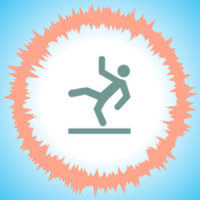New Rules Aimed At Reducing Slip and Fall Accidents Could Leave Employers Liable

New rules finalized by the Occupational Safety and Health Administration (OSHA), which will go into effect on January 17th of the new year, require all employers to take stringent steps to prevent slip and fall accidents. While the construction industry has long been dealing with such requirements, these rules now essentially apply to all training, use, and maintenance of protective equipment in the workplace.
Fall hazards are reportedly the leading cause of worker deaths and injuries every year. In order to address this issue, OSHA designed the new rules to focus on establishing new requirements for working surfaces, floors, ladders, roofs, scaffolds, stairways, walkways, and related areas. OSHA estimates that they will impact more than 110 million workers employed at seven million worksites, preventing close to 6,000 injuries and 30 fatalities each year.
Changes & Employer Requirements
The new rules will require employers to select a fall protection program and comply with revised requirements for portable and fixed ladders. They also prohibit the use of body belts as part of the personal fall arrest systems. Fall protection options include safety nets, guardrails, positioning systems, travel restraints, handrails, and several other options.
Employers must also ensure that ladders are capable of supporting the “maximum intended load” at a minimum, where maximum intended load equals the total weight and force anticipated to be applied by the employee, equipment, and/or any other materials. All ladders must also be inspected before a work shift, and any portable ladders used must include slip-resistant rungs and steps.
Employers must also provide training to any workers who use personal fall protection equipment or otherwise work under circumstances that could cause them to slip and fall (for example, employees who work on a dock). Training must include the identification of fall hazards and the maintenance, inspection, and storage of any equipment used for fall protection.
How This Could Affect Personal Injury Lawsuits
While these standards were previously only applied to the construction agency, OSHA decided to expand their application to general industries in order to keep up with technological advancement and promote consistency in general.
It is also worth noting that workers’ compensation and personal injury litigation have already served an incentive for some—but not all—employers to implement safety protocols which already comply with these new rules. However, now that these provisions are officially federal requirements, any employers not complying with them are technically breaking the law, and that can affect any personal injury case brought by someone who slips and falls in connection with a violation; in other words, someone who is injured as the result of a slip and fall accident would arguably have an easier time arguing that their employer is liable for their injuries.
Contact an Experienced Slip and Fall Attorney
If you’ve suffered from a slip and fall injury, speaking with an experienced attorney can help you understand if your rights have been violated and you may be entitled to financial compensation. At Lavalle, Brown & Ronan, P.A., our experienced Boca Raton slip and fall lawyers are here to help you understand your rights and develop your case. Contact us today for a free consultation.
For more information and in depth analysis, please contact Attorney Ken Ronan at kronan@bocalaw.com and Case Manager Richard Bagdasarian at rbagdasarian@bocalaw.com.
Resource:
mhlnews.com/facilities-management/new-osha-slip-fall-rules-impact-employers-all-industries
source https://richardbagdasarian.wordpress.com/2017/02/13/richard-bagdasarian-attorney-new-rules-aimed-at-reducing-slip-and-fall-accidents-could-leave-employers-liable/
No comments:
Post a Comment